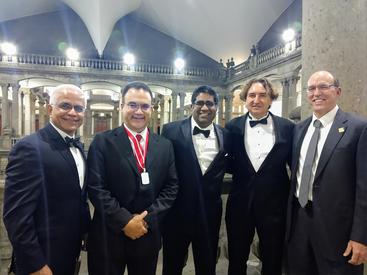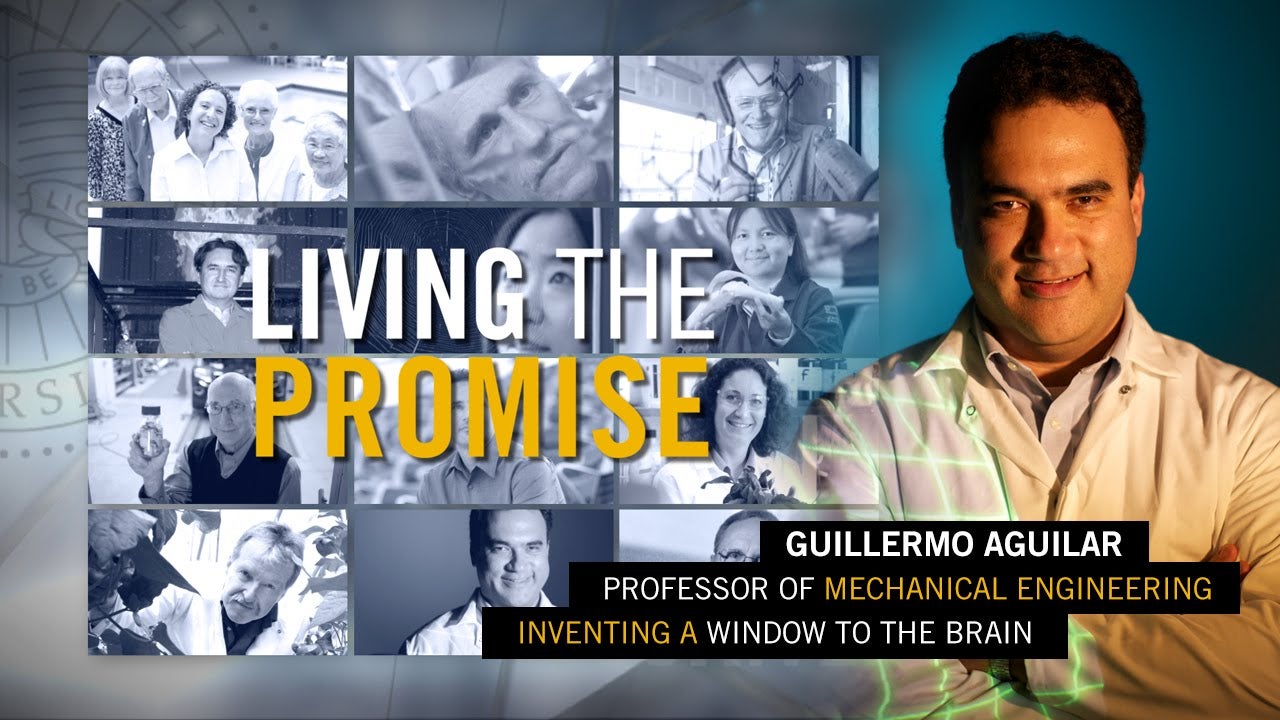Guillermo Aguilar, a professor and chair of mechanical engineering at UC Riverside’s Marlan and Rosemary Bourns College of Engineering, was inducted into the National Academy of Engineering of Mexico at a ceremony held July 25 in Mexico City. The honor recognizes Aguilar’s contributions to mechanical and biomedical engineering, particularly in biomedical optics and lasers, and his pioneering work to develop a ceramic “Window to the Brain” in collaboration with colleagues in Mexico.
Admission to the academy reflects contributions to and leadership in science and engineering, as well as his numerous efforts to foster educational initiatives between the two countries.
Aguilar was born in Mexico City and received his bachelor’s degree in mechanical and electrical engineering from the National Autonomous University of Mexico in 1993. He did his graduate research on fluid mechanics and heat transfer at UC Santa Barbara and received his doctorate in 1999 having studied non-Newtonian fluids mechanics and heat transfer, turbulent pipe flows, drag and heat transfer reduction.
Looking for a new research challenge, Aguilar received a two-year Whitaker foundation postdoctoral fellowship at UC Irvine’s prestigious Beckman Laser Center. Two years later, he was appointed as adjunct assistant professor and chosen to lead a new biomedical engineering lab within the Center for Biomedical Engineering, which went on to become an independent academic department at UC Irvine.
Aguilar brought his work on biomedical optics and lasers to UC Riverside as an assistant professor of mechanical engineering in 2003, and gradually branched out into the fields for which he has become best known. He applied his interest in heat transfer to develop cryogenic spray cooling, which reduces heat injury to healthy tissue by cooling it before laser treatment of unhealthy tissue. He also developed new techniques for laser-assisted cryosurgery and developed a leading research program on laser-induced cavitation, which explores the use of laser-produced bubbles to deliver therapeutic drugs into tissues.
But it was with Javier Garay, a professor of mechanical engineering who has since moved to UC San Diego’s Jacobs School of Engineering, that Aguilar began to investigate what kind of bone would benefit from a new transparent ceramic based on zirconia that Garay and his group had just developed.
In 2010, he took a six-month sabbatical at the Center for Research and Advanced Studies of the National Polytechnic Institute, Mexico’s premier research institute, where he and his colleague Santiago Camacho from the Center for Scientific Research and Superior Education of Ensenada, with whom he had been working on laser-tissue interactions, began to envision medical applications of the transparent ceramic.
Most materials used to replace bone are made of titanium or opaque polymer. But for patients with brain conditions that require regular medical treatments, such as cancer, traumatic injuries, neurodegenerative diseases, and stroke, a transparent cranial implant would allow doctors to access the brain on demand without repeated craniotomies.
Aguilar and Garay recruited a team of researchers from UC Riverside and UC San Diego, while Camacho helped assemble a team from three top Mexican universities for a project called “The Window to the Brain.”
The Window to the Brain implants are produced by densifying yttria-stabilized zirconia nanopowder into a bulk ceramic material. Their manufacturing process minimizes light scattering caused by diffraction and incorporates guides to direct therapeutic laser and ultrasound waves through the ceramic. This allows undiminished light from a laser or waves from an ultrasound transducer to focus directly on one spot on the brain. The project has received $5 million in grant funding from the National Science Foundation’s Partnership in International Research and Education program and Mexico’s National Council of Science and Technology.
This honor is also a recognition of Aguilar’s educational and entrepreneurial activities. To name a few, Aguilar established an eight-week summer internship program at UCR in 2013 called Summer Internship Program– Mexico (SIP-Mexico), where junior and senior engineering students from various Mexican institutions join UCR’s research labs— many of whom become prospective graduate students for UCR and other graduate institutions. So far, more than 30 students have participated in SIP-Mexico. In 2015, Aguilar and Garay co-founded a company called Advanced BioCeramics, which intends to commercialize discoveries such as the cranial implant and other ceramic implantable devices. To date, Aguilar holds two U.S. patents, with at least six more in process.

